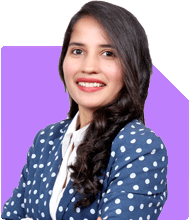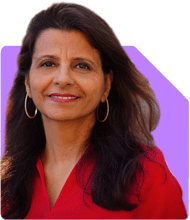20 Year Old Woman Wants To Lose 24 Kgs In 2 Months: Is It Safe And Sustainable?
Shreya Shah |110 Answers |Ask -Follow
Nutritionist, Diabetes Educator - Answered on Jul 15, 2024
A Fit India ambassador, she has been helping individuals to manage thyroid, diabetes and other lifestyle problems with the right diet and nutrition plan for nearly a decade.
Shreya is a member of Indian Dietetic Association and has worked in Mumbai’s KEM Hospital and Bai Jerabai Wadia Hospital For Children and Thane’s L H Hiranandani Hospital where she has trained healthcare professionals and organised wellness workshops.
Shreya holds a bachelor's degree in science from Ramnarain Ruia College, Mumbai, and a post-graduate degree in dietetics from SNDT Women's University, Juhu, Mumbai.... more

I am 20 years old and I am 84 kgs. I am a female. I want to lose weight within 2 months and I want to become 60 kgs. Is this possible? Will I be able to keep my weight away forever and never gain it back once I lose it? I also want toned abs... How to lose this much weight healthily within 2 months? Is there any app or platform or any website where paid services from qualified nutritionists are available that can help me achieve this weight loss goal? Please respond...
And even if someone agrees to help you with this goal, you will be back to the original weight once u come back to ur Older lifestyle and eating habits
You may like to see similar questions and answers below
Komal Jethmalani |382 Answers |Ask -Follow
Dietician, Diabetes Expert - Answered on Apr 15, 2023
Komal Jethmalani |382 Answers |Ask -Follow
Dietician, Diabetes Expert - Answered on May 25, 2023
Dr Dipankar Dutta |1125 Answers |Ask -Follow
Tech Careers and Skill Development Expert - Answered on Apr 11, 2025
Dr Dipankar Dutta |1125 Answers |Ask -Follow
Tech Careers and Skill Development Expert - Answered on Apr 11, 2025
Dr Dipankar Dutta |1125 Answers |Ask -Follow
Tech Careers and Skill Development Expert - Answered on Apr 11, 2025
Dr Dipankar Dutta |1125 Answers |Ask -Follow
Tech Careers and Skill Development Expert - Answered on Apr 11, 2025
Dr Dipankar Dutta |1125 Answers |Ask -Follow
Tech Careers and Skill Development Expert - Answered on Apr 11, 2025
Dr Dipankar Dutta |1125 Answers |Ask -Follow
Tech Careers and Skill Development Expert - Answered on Apr 11, 2025
Dr Dipankar Dutta |1125 Answers |Ask -Follow
Tech Careers and Skill Development Expert - Answered on Apr 11, 2025
Dr Dipankar Dutta |1125 Answers |Ask -Follow
Tech Careers and Skill Development Expert - Answered on Apr 11, 2025
Mayank Chandel |2191 Answers |Ask -Follow
IIT-JEE, NEET-UG, SAT, CLAT, CA, CS Exam Expert - Answered on Apr 11, 2025
Mayank Chandel |2191 Answers |Ask -Follow
IIT-JEE, NEET-UG, SAT, CLAT, CA, CS Exam Expert - Answered on Apr 11, 2025


















